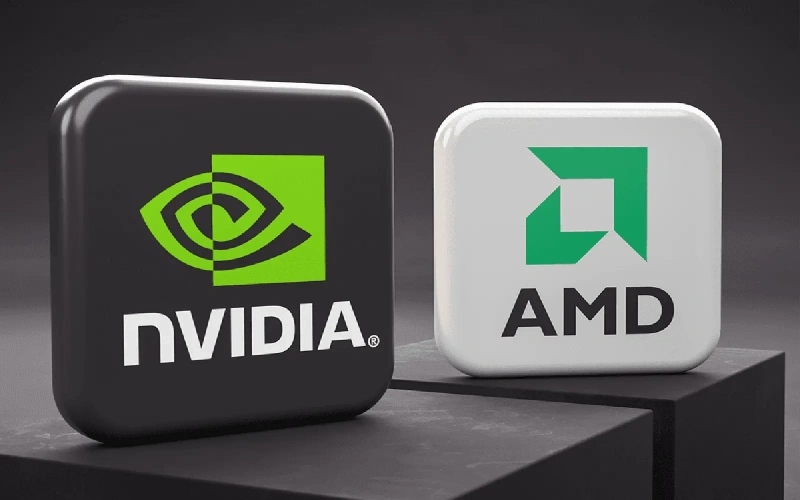1. Introduction: The Great AI GPU Debate
AMD’s MI300X is shaking NVIDIA’s throne – but raw specs alone won’t determine your AI success. With AMD’s data center GPU revenue surging 80% YoY (Q1 2024) and NVIDIA’s H200 sold out until 2025, hardware choices have never been more complex. Yet true AI ROI depends on three pillars:
- Strategic hardware selection
- Robust software ecosystems
- Intelligent orchestration (this is where WhaleFlux transforms the game)
2. AMD vs NVIDIA: Battle of the Titans
Let’s compare today’s flagship contenders:
| Metric | NVIDIA H200 | AMD MI300X | RTX 4090 (Budget Star) |
| FP8 TFLOPS | 1,979 | 1,300 | 132 |
| VRAM | 141GB HBM3e | 192GB HBM3 | 24GB GDDR6X |
| 8-GPU Cost | ~$400k | ~$320k | ~$20k |
Software Ecosystems:
- NVIDIA: CUDA dominance + 250+ optimized AI frameworks
- AMD: ROCm 6.0 achieves PyTorch parity but has 30% fewer prebuilt containers
*”WhaleFlux breaks vendor lock-in – manage H100s, MI300Xs, and 4090s in a unified pool.”*
3. Real-World AI Workloads: Benchmarks Beyond Spec Sheets
*Case 1: 70B+ Parameter LLMs*
- H200: 1.7x faster training than MI300X (thanks to NVLink + FP8)
- MI300X: 40% lower $/token inference (192GB VRAM advantage)
Case 2: Stable Diffusion XL
- RTX 4090: 18 it/sec at 1/10 H200 cost – perfect for prototyping
- AMD Challenge: “Stable Diffusion requires custom ROCm kernels – WhaleFlux auto-deploys pre-optimized containers”
Case 3: HPC Scaling
- Fragmented Tools: DCGM (NVIDIA) vs. ROCm-SMI (AMD) → double the monitoring
- Wasted Resources: Isolated GPU pools average <35% utilization
- Stability Risks: Manual CUDA→HIP translation fails mid-training
4. The Hidden Cost: Management Overhead
Mixing AMD/NVIDIA clusters creates operational chaos:
- Fragmented Tools: DCGM (NVIDIA) vs. ROCm-SMI (AMD) → double the monitoring
- Wasted Resources: Isolated GPU pools average <35% utilization
- Stability Risks: Manual CUDA→HIP translation fails mid-training
*WhaleFlux’s unified control plane solves this:
- Automates ROCm/PyTorch deployments
- Pools MI300X + H200s as “super compute tier”
- Slashes idle cycles by 60% via cross-vendor scheduling*
5. WhaleFlux: Your Agnostic AI Orchestrator
Whether you use NVIDIA H200s or AMD MI300Xs, WhaleFlux delivers:
Hardware Agnosticism:
Supports NVIDIA (H100/H200/A100/4090) + AMD (MI250X/MI300X)
Game-Changing Features:
- TCO-Optimized Scheduling: Auto-assigns workloads (e.g., MI300X for memory-hungry jobs)
- 1-Click ROCm Environments: “No more HIP translation hell for PyTorch on AMD”
- Unified Cost Dashboard: Compare $/inference across vendors in real-time
Proven Results:
*”Semiconductor Leader X cut training costs by 42% using WhaleFlux to blend H200s + MI300Xs”*
*(Access WhaleFlux’s NVIDIA/AMD GPUs via purchase or monthly rentals – min. 1-month term)*
6. Strategic Guide: Choosing & Managing Hybrid Fleets
When to Choose NVIDIA:
- CUDA-dependent legacy models
- NVLink-dependent scaling
- FP8 precision training
When AMD Shines:
- Memory-intensive inference (192GB VRAM!)
- Cost-sensitive HPC workloads
- Open-source-first software stacks
Procurement Checklist:
✅ DO: *”Deploy WhaleFlux first – its TCO engine optimizes your GPU mix (e.g., ‘30% MI300X + 70% H200’)”*
❌ AVOID: Isolated AMD/NVIDIA silos (kills utilization)
7. Conclusion: Beyond the Holy War
The AMD vs NVIDIA battle isn’t winner-takes-all – it’s about right GPU, right workload, zero waste. With WhaleFlux, you harness:
- AMD’s cost-efficient memory
- NVIDIA’s scaling prowess
- RTX 4090’s prototyping agility
…all while slashing management overhead by 60%.

